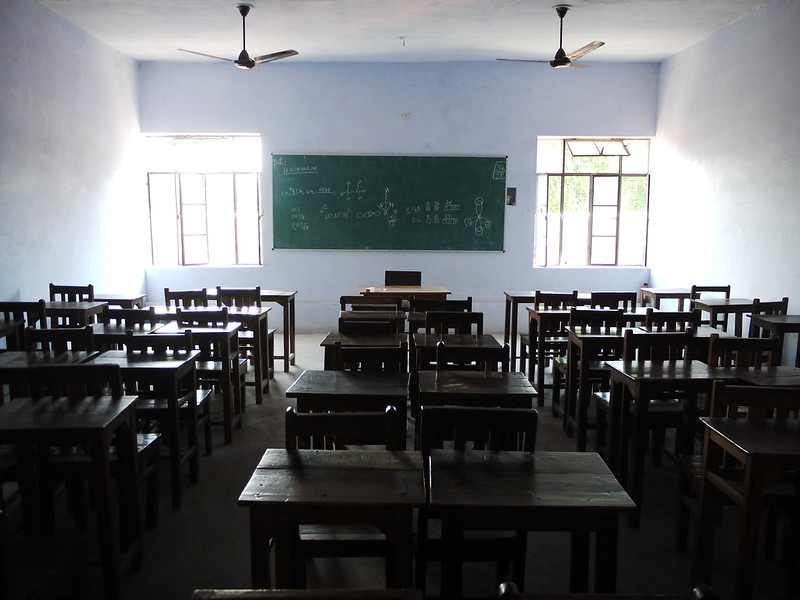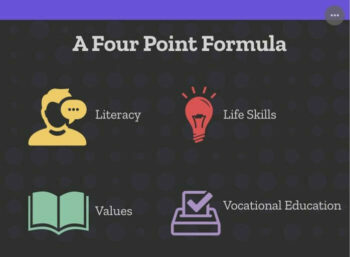Authored by Purvi Asthana
Grade 9 Topic: Precipitation
Aim: To describe what precipitation is and the different forms in which it occurs
“Does the aim matter to your students?”
The question stared at me and I stared back till I wrote out the most honest reply I could think of: “No.”
“Why do you think the aim does not matter to your students?” asked the manager in a breezy voice over the phone. “Well…” I prepared to launch into a tirade which took up the better part of the conversation that followed.
I teach science and geography to 49 Grade 9 students at a low-income private English-medium school in Pune. Based on Teach for India data collected from the beginning of the year and mid-year assessments, 75% of my students are not even at the grade level necessary to read the English material in their prescribed textbooks. Now, I have students who have come from Marathi-medium schools without knowing a word of English, and who within a year’s time, drastically improve to catch up to the grade level. At the same time, I also teach students whose skills have deteriorated over a year’s time. The difference? Their levels of motivation.
Yes, it is reductive to say that motivation is the sole reason, when there are so many factors that affect students: their families, communities, and peer groups. But these factors are not always in a teacher’s control. Motivating our students to be the best possible versions of themselves, however, is. Now the question arises as to why students are differently motivated when they are being taught the same subjects with the same teachers, content, and instructional hours.
The answer, as you may have guessed, is because children are being taught uniformly, irrespective of their varying levels of understanding, interests, and attention spans. A lack of teacher training further contributes to the problem as the teachers themselves are ill-equipped to handle diverse learning capabilities, when dealing with time and resource constraints. Constantly questioning my own approach towards teaching has led me to the following conclusion: Rather than sitting in class and solely listening to lectures on the brain or carbon compounds, students should be exposed to applied skills that will help them become financially independent once they leave school. Focusing on four crucial aspects–values, vocational training, literacy, and life skills–enhances our students’ chances of leading fulfilled lives, and provides them with the autonomy and skills to pursue their ambitions and career goals.
Step 1: Literacy
Right from independence, governments have focused on improving the literacy rate, through path-breaking policies like the Sarva Shiksha Abhiyan and the mid-day meal scheme. Both helped bring children to schools and encourage their parents’ investment in education as well. However, in spite of these programs and many more, are India’s students truly literate?
With the no-detention policy of the RTE Act, the government has been able to increase enrollment in schools and reduce the drop-out rate from primary schools. But focusing on numbers has come at the cost of ensuring a high quality of literacy. As an assistant school leader from a Pune-based education NGO, while speaking on the issue says, “The learning gap starts right from Grade 1. In pre-kindergarten and kindergarten, students are still learning the alphabet and familiarizing themselves with basic words and as soon as they jump to Grade 1, they are expected to write sentences. Each year the gap widens as the system relentlessly pushes them on to higher grades, not taking into account what and how much the students have mastered.”
As students are trained to become literate, it is crucial that content is contextualised for them. For students in primary grades, story-telling and activities that help them learn phonics have been found to be effective in developing strong literacy, whereas for older students, focusing on grammar and vocabulary takes precedence. According to the UK’s Education Endowment Foundation, a targeted small group approach is especially useful for disadvantaged students, and additional parental involvement can lead to better outcomes too. However, the latter can be challenging when parents are uneducated or the students are first-generation learners.
You May Also Like: DIKSHA: The Long-Awaited Antidote to India’s Education Crisis?
Information and Communication Technology (ICT) also needs to be brought in to assist teachers in developing these skills. Research shows that ICT can greatly help improve literacy and mathematical skills for students, and also reduce the gender gap in performance. The Maharashtra State Council of Educational Research and Training (MSCERT), and the Centre’s DIKSHA, are laudable steps in the right direction but better implementation is still required.
Step 2: Life Skills
Given this state of affairs, I went about figuring out how to make sure the students have something to fall back on even after leaving school. In addition to being able to read and write, students also require skills of critical thinking, empathy, self-awareness, and problem solving to succeed in life. It is imperative that educators focus on these aspects too, especially while dealing with students who are unable to cope with the tough pace of curriculum being taught in mainstream schools.
You May Also Like: An Optimistic Fix: The Pitfalls of the Happiness Curriculum in Delhi
Inspiration can be drawn from the Dream a Dream Foundation’s approach to teaching students who come from challenged backgrounds. The program works as an innovation lab that helps students reimagine their understanding of education. It inculcates life skills through after school sports and art activities, and also helps older students choose a career path as they transition into adulthood.
Step 3: Values
Most schools have moral science classes that try and teach students values of honesty, kindness, courtesy and so on. However, students learn more from experience rather than textbooks. It is crucial that teachers be strong role models of the values that they want their students to imbibe and design curriculum and lesson plans accordingly. I know of some Fellows who make their students sign a moral contract wherein the students agree to follow class rules and demonstrate certain values. Failing to do so leads to consequences that students collaboratively agree upon. I personally chose to teach my students about team-work while teaching them about the different organ systems in the body and how they function in a coordinated manner. Developing similar collaborative value systems in the classroom is a crucial aspect of pedagogy — without them, one is just a literate person, and not an educated one.
Finally, Step 4: Vocational Training
Since the RTE only grants compulsory education till Grade 8, you would think that the education up till Grade 8 would suffice one in leading a full life, right? But, as we’ve seen, this is sadly not true.
Even though our country has a large workforce, most of the people entering the workforce are either unskilled or under-skilled and hence, largely unemployable.
Hence, Skill Development and Vocational Training is the last item on this list. It makes sense not just for students who drop out but also for the ones who want to pursue higher education. To remedy this, the Government launched the National Policy on Skill Development and Entrepreneurship in 2015 under their Skill India initiative. Leading Indian companies such as IL&FS Skills Development Corporation Limited and Tata Strive have also taken up the initiative to train students and adults in different trades. Apart from that, there are non-profits also actively engaged in this endeavour such as the Lighthouse Project in Mumbai. Stay tuned for part 2 of this series, where we investigate just how effective and important these platforms can be!
The Way Forward
Agreed that given our country’s large population and income disparity, it is quite the mammoth task to provide a quality education that every child would find relevant and useful. Yet, it is a necessary task to undertake, and one which we must endeavour to achieve at all costs. The tenets that I have espoused are small yet hugely significant steps in the right direction. They may not make the most sense to everybody, especially to those who have the capacity to explore methods of education that provide a holistic approach to self-development. However, for the majority of Indian students currently trapped in our demanding schools and struggling with years of learning gaps due to the unavailability of teachers or resources, such an approach could hopefully provide some respite and some relevance in the education that they receive.
Purvi is a physicist seeking to understand the universe and everything in it. She aspires to work at the intersection of science, environment, and education.
Featured image courtesy of Barry Pousman (CC BY 2.0)










